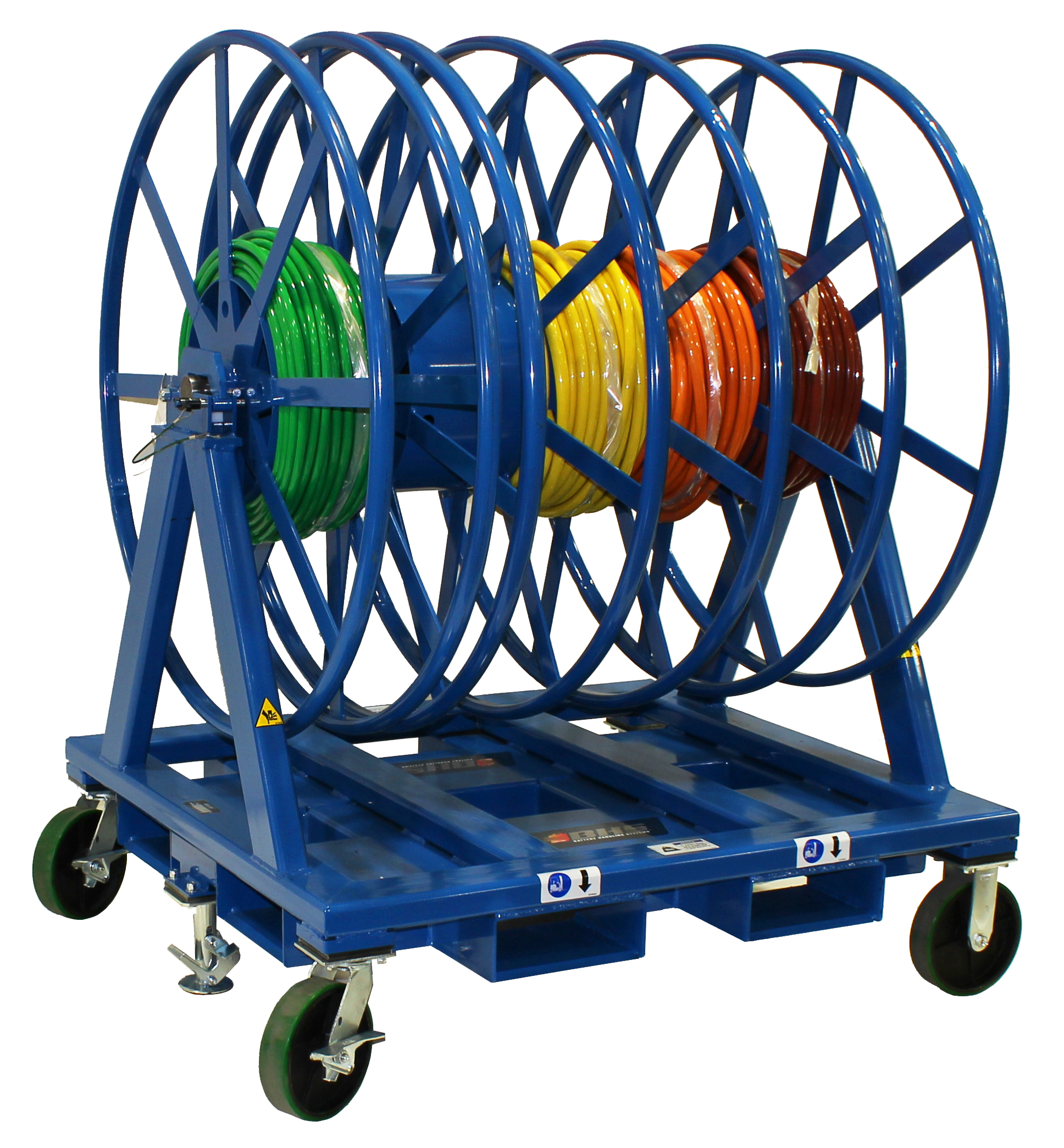We use cookies to make your experience better. To comply with the new e-Privacy directive, we need to ask for your consent to set the cookies. Learn more.
Optimal Cable and Conduit Handling Procedures for Electricians
If your operation isn’t taking appropriate precautions with cable and conduit handling procedures, you’re losing money. This is especially true for electricians in industrial and commercial sectors, as proper handling and storage of these materials will prevent downtime, extend the operative life of your materials and equipment, and save your company money.
Here’s what you need to know to establish appropriate cable and conduit handling procedures:
Loading, Unloading and Rolling Reels
It is important that the conductor is not damaged in any way. Loading and unloading equipment, such as forklifts or cranes, should never come in contact with the conductor or its protective covering. Forklifts must lift the reel by contacting both flanges; always load reels with the flanges on edge and chock and block securely.When using a crane to unload cable, use a shaft through the arbor hole or a cradle to support both reel flanges. Ramps must be wide enough to support both reel flanges. 
A product like the BHS Overhead Reel Lifter makes this a much easier process and holds the spool in an optimal ergonomic position for payout. It features adjustable load beams, which are helpful when handling reels of different sizes, and it stores easily with built-in housing for the hook and chain assemblies. This makes it an excellent option for facilities that need occasional yet versatile reel handling equipment.
The BHS Parallel Reel Payout is another excellent option for electricians, as it can hold multiple reels of cable on a single master unit, allowing for additional versatility along with an even payout (essential for a safe and efficient operation).
While it may sound obvious, you should never drop reels. To roll reels safely, secure the end of the cable and roll counterclockwise to the direction the cable is wrapped. Do not roll clockwise or in the direction that unreels the cable.
Storing Reels
Just as with handling, you should remember that these materials are more delicate than they might seem, so proper storage is absolutely essential. Store reels where they will be safe from both physical and environmental hazards. Keep in mind that some cable is not sun-resistant, and must be stored indoors.Store reels on hard surfaces, as this will prevent the flanges from sinking and the reel weight from resting on the cable. Only stack light reels directly on top of each other using two-by-four spacers or pallets under the bottom flange. For heavier reels, store on hard surfaces with the flanges vertical. Storing heavier reels with the flanges horizontal will put too much weight on the cable and can damage it.
When reels need to be stored for an extended time, hold them in place and never stack hazardously. Always seal conductor ends in order to prevent the entrance of moisture and particles.
If cable must be stored outside, reels should be placed on a hard, dry surface in a well-drained area. Seal the ends of the cable with weatherproof caps or tape. Moisture and contaminant particles are the enemy, so fight back!
Handling During a Pull
On a pull, you should feed the cable straight into the conduit by hand or, for larger conductors, over a large diameter sheave. It is important that you never pull a conductor directly over sharp angles, as this can damage the conductor. Pull the conductor completely out of one side of the enclosure and then feed it into the other side of the enclosure.As mentioned earlier, a dedicated piece of equipment that offers control over your payout will greatly enhance productivity; overhead payout is preferable, since this keeps cables in an appropriate ergonomic position for the worker.
Cable and conduit are more delicate than they may seem, and there’s no sense in installing damaged materials. Taking proper care to unload, load, store and handle these materials without damaging them is an integral part to getting the job done right the first time.
References:
Koch, Samantha. "Handling and storing cables." Anixter, 2015. Web. 19 Dec. 2015
"Installation and Application Guide for 600V Conductors." Simpullsolutions. Simpull THHN, 2007. Web. 19 Dec. 2015
"Wiring methods, components, and equipment for general use." Occupational Safety & Health Administration, 2015. Web. 19 Dec. 2015
